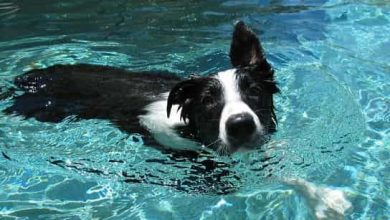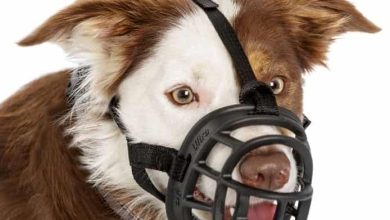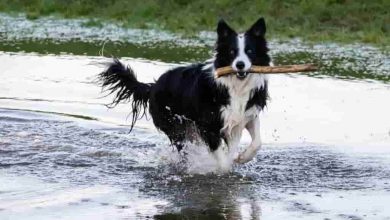Does a dog need a hat in the winter


Wondering if your dog needs a hat in the winter? Learn more about dog hats for winter and whether your furry friend could benefit from wearing one to stay warm. Get tips on choosing the right dog hat for winter and discover why some dogs may need extra protection. Read on for expert insights on dog hats in winter.
Dog Hats for Winter: Does Your Canine Companion Need One?
When the temperature drops and the snow starts to fall, many dog owners wonder if their furry friends need extra protection against the cold. One question that often arises is whether or not dogs need hats in the winter. In this article, we’ll explore the topic of dog hats for winter in more detail to help you determine whether or not your dog could benefit from wearing one during the colder months.
Why Do Dogs Need Hats in the Winter?
Not all dogs need hats in the winter. In fact, most dogs are naturally well-equipped to handle cold weather thanks to their thick fur coats. However, there are some situations in which a dog may benefit from wearing a hat. For example, if your dog has a short or thin coat, they may be more susceptible to the cold and could benefit from extra insulation. Similarly, older dogs or those with certain health conditions may also struggle in the cold and could benefit from a hat to help them stay warm.
Choosing the Right Dog Hat for Winter
When choosing a hat for your dog, it’s important to consider a few key factors. First, make sure the hat is made from warm, insulated material that will keep your dog’s head and ears protected from the cold. Second, make sure the hat fits your dog properly and doesn’t cause any discomfort or restrict their movement. Finally, make sure the hat doesn’t impair your dog’s vision or hearing, as this could be dangerous.
Conclusion
In conclusion, whether or not your dog needs a hat in the winter depends on a variety of factors, including their breed, coat type, and age. While most dogs don’t need hats, some may benefit from the extra protection and warmth they provide. If you do decide to get a hat for your dog, make sure to choose one that fits properly, is made from warm material, and doesn’t cause any discomfort or impair your dog’s vision or hearing. By taking these steps, you can help your furry friend stay comfortable and cozy all winter long.
Here are some of the dogs hats winter you might like:
Hatphile Pre-Washed Soft Embroidery Dad Hat
MuYaoPet Dog Cat Beret Wool Hat
Carhartt Firm Duck Insulated Dog Chore Coat Brown/Brass
Some FAQs on Dogs Hats Winter
Is it OK for dogs to wear hats?
It’s generally okay for dogs to wear hats, as long as the hat is designed specifically for dogs and fits properly. However, not all dogs need hats, and some may find them uncomfortable or restrictive. When considering whether or not to get a hat for your dog, it’s important to take into account your dog’s breed, coat type, and age, as well as any health conditions they may have. Additionally, it’s important to choose a hat made from warm, insulated material and to make sure it doesn’t impair your dog’s vision or hearing. By taking these factors into consideration, you can help ensure your dog stays comfortable and safe while wearing a hat.
Why should dogs wear hats?
Not all dogs need hats, but there are some situations in which a dog may benefit from wearing one. Here are a few reasons why dogs may wear hats:
- Protection from the cold: Dogs with short or thin coats may be more susceptible to the cold and could benefit from a hat to help keep their heads and ears warm.
- Sun protection: Some hats are designed to protect dogs from the sun’s harmful UV rays, which can be particularly important for dogs with light-colored coats or those who spend a lot of time outdoors.
- Fashion: Let’s face it, dog hats can be cute and stylish, and many pet owners enjoy dressing up their furry friends in fun and festive hats.
Ultimately, whether or not your dog should wear a hat depends on a variety of factors, including their breed, coat type, and age. If you’re considering a hat for your dog, it’s important to choose one made from warm, comfortable material that fits properly and doesn’t impair your dog’s vision or hearing.
See also: Are Dogs Mouths Cleaner? Debunking the Myth in 2023
What is the best cold weather hat?
When it comes to choosing the best cold weather hat for your dog, there are a few key factors to consider. Here are some things to look for in a good cold weather hat:
- Warmth: Look for a hat made from warm, insulated material that will help protect your dog’s head and ears from the cold. Fleece, wool, and neoprene are all good options.
- Proper fit: Make sure the hat fits your dog properly and doesn’t slip off or cause any discomfort. Look for hats with adjustable straps or elastic bands to ensure a snug, comfortable fit.
- Visibility: Choose a hat that doesn’t impair your dog’s vision or hearing, as this could be dangerous.
- Durability: Look for a hat that is well-made and can withstand cold, wet weather conditions.
- Style: While style may not be the most important factor, you’ll likely want to choose a hat that looks good on your furry friend and matches their personality.
Ultimately, the best cold weather hat for your dog will depend on their individual needs and preferences. It’s always a good idea to consult with your veterinarian if you have any questions or concerns about keeping your dog warm and comfortable in cold weather.
Why do dogs don not like hats?
Not all dogs dislike hats, but some may find them uncomfortable or even distressing. Here are a few reasons why some dogs may not like wearing hats:
- Restricted movement: Dogs rely heavily on their senses, particularly their sight and hearing, to navigate their environment. A hat that covers their ears or eyes can be disorienting and make it more difficult for them to move around comfortably.
- Unfamiliar sensation: Dogs may not be used to having something on their head and may find the sensation strange or uncomfortable.
- Poor fit: A hat that doesn’t fit properly can be uncomfortable and may even cause pain or irritation, which can make your dog less likely to want to wear it.
- Negative association: If your dog has had a negative experience associated with wearing hats, such as feeling restricted or uncomfortable, they may be less likely to want to wear one again.
It’s important to note that not all dogs will dislike hats, and some may even enjoy wearing them. If you’re considering a hat for your dog, it’s important to introduce it slowly and carefully, and to monitor your dog’s behavior to ensure they are comfortable and happy.
See also: 10 signs a Border collie is dying: Border collies poor health
Why should you not rub a dogs head?
It’s generally not a good idea to rub a dog’s head, particularly if you don’t know the dog well. Here are a few reasons why:
- Fear or discomfort: Rubbing a dog’s head, particularly if it’s a dog you don’t know well, can be intimidating or uncomfortable for the dog. They may interpret the action as a threat or invasion of their personal space, which could cause them to feel scared or defensive.
- Aggravate injuries: If the dog has an injury or sore spot on their head, rubbing it could be painful or cause further aggravation.
- Misinterpretation: Dogs rely heavily on body language and touch to communicate with others, and rubbing a dog’s head can sometimes be interpreted as a dominant gesture. This can be especially true if the dog is already feeling anxious or insecure.
Instead of rubbing a dog’s head, it’s generally a better idea to offer them a gentle pat on the shoulder or chest, where they are more likely to enjoy the physical contact. Additionally, it’s always important to approach dogs slowly and calmly, and to respect their boundaries and body language.
Why don’t you wash a dog’s head?
You can wash a dog’s head, but it’s important to be cautious and careful when doing so. Here are a few things to keep in mind:
- Sensitivity: A dog’s head is a sensitive area, and they may not like having water or shampoo applied directly to their face. It’s important to be gentle and avoid getting water or shampoo in their eyes or ears.
- Dry skin: If a dog’s head is washed too frequently or with harsh products, it can lead to dry, itchy skin or even skin irritation. It’s generally a good idea to only wash a dog’s head when necessary and to use gentle, dog-specific shampoos.
- Ear infections: If water or shampoo gets into a dog’s ears during a head wash, it can increase the risk of ear infections. It’s important to keep a dog’s ears dry and avoid getting water or shampoo in their ears during a wash.
Overall, it’s important to be cautious and gentle when washing a dog’s head, and to use dog-specific shampoos that are designed to be gentle on their skin. If you’re unsure about how to properly wash your dog’s head or have concerns about their skin or coat health, it’s always a good idea to consult with your veterinarian.
See also: Are Border collies good with cats?
How do I know if my dog is cold?
Dogs can get cold just like humans, and it’s important to be able to recognize the signs that your dog may be feeling chilly. Here are a few signs that your dog may be cold:
- Shivering: Shivering is a common sign that your dog is feeling cold. This is particularly true if your dog is shivering and doesn’t have any other obvious signs of distress, such as illness or injury.
- Curling up: Dogs often curl up into a ball when they’re feeling cold, as this helps them conserve body heat.
- Seeking warmth: If your dog is seeking out warm spots, such as a sunny patch on the floor or a cozy blanket, it may be a sign that they’re feeling cold.
- Slowing down: Cold weather can make dogs feel lethargic or slow, as their bodies work to conserve energy and stay warm.
- Whining or whimpering: If your dog is whining or whimpering, it may be a sign that they’re feeling cold or uncomfortable.
It’s important to keep an eye on your dog and make sure they’re comfortable and warm, particularly in cold weather. If you’re concerned about your dog’s temperature or have any other concerns about their health or behavior, it’s always a good idea to consult with your veterinarian.
What smells do dogs hate the most?
Dogs have a powerful sense of smell and can be sensitive to a variety of scents. While individual dogs may have different preferences and aversions when it comes to smells, here are a few scents that many dogs are known to dislike:
- Citrus: Many dogs dislike the smell of citrus fruits, such as oranges, lemons, and grapefruits. The strong, acidic scent can be overwhelming and unpleasant to them.
- Vinegar: Vinegar has a pungent, sour scent that many dogs find unappealing.
- Spices: Some dogs are sensitive to strong spice scents, such as cinnamon, cumin, and pepper.
- Cleaning products: Many household cleaning products, such as bleach and ammonia, have strong chemical scents that can be unpleasant or overwhelming to dogs.
- Skunk spray: While not a common scent in most dogs’ daily lives, many dogs are known to dislike the pungent, musky scent of skunk spray.
It’s important to keep in mind that every dog is unique and may have different preferences when it comes to scents. Additionally, some dogs may have sensitivities or allergies to certain smells or chemicals, so it’s always a good idea to monitor your dog’s reactions and consult with your veterinarian if you have any concerns.
See also: Major Reasons Behind Neutering a Border Collie
What smell makes dogs happy?
Dogs have a keen sense of smell and can be sensitive to a wide range of scents, some of which can make them happy. Here are a few smells that are known to have a positive effect on many dogs:
- Meat and other food smells: Many dogs love the smell of meat, such as chicken, beef, and pork. Other food smells, such as peanut butter and cheese, can also be appealing to dogs.
- Certain essential oils: Some essential oils, such as lavender and chamomile, are known for their calming properties and can help to relax dogs.
- Natural scents: Dogs are often drawn to natural scents, such as the smell of grass or flowers.
- Familiar scents: Dogs have a strong sense of smell and are often comforted by familiar scents, such as the smell of their owners or their own bedding.
- Treats: Many dogs love the smell of treats, such as bacon or liver treats, and may become excited and happy when they smell them.
It’s important to keep in mind that every dog is unique and may have different preferences when it comes to scents. Additionally, some dogs may have sensitivities or allergies to certain smells or chemicals, so it’s always a good idea to monitor your dog’s reactions and consult with your veterinarian if you have any concerns.
What smell do dogs hate to stop pooping?
Dogs have a natural instinct to eliminate waste, and they may not necessarily associate a specific smell with stopping the act of defecating. However, there are certain scents that can be used as deterrents to discourage dogs from eliminating in certain areas.
One scent that is often used to deter dogs from pooping in a specific area is citrus. The strong, acidic scent of citrus fruits, such as oranges or lemons, can be unpleasant to many dogs and may discourage them from eliminating in the area. Other scents that are sometimes used to deter dogs from pooping in certain areas include vinegar, ammonia, and cayenne pepper.
It’s important to note that using strong-smelling deterrents may not always be effective and can potentially cause harm to your dog. Additionally, it’s important to make sure your dog has access to appropriate areas for elimination and that they are getting enough exercise and opportunities to go outside. If you are having trouble with your dog eliminating in inappropriate areas, it’s always a good idea to consult with a veterinarian or professional dog trainer for guidance.
See also: Border collie sleeping habits complete guide
Do nail caps hurt dogs?
Nail caps, also known as soft paws, are small covers that are placed over a dog’s nails to prevent scratching or damage to floors, furniture, or other surfaces. When properly applied, nail caps should not hurt dogs.
The application of nail caps is a simple and painless procedure that can be done at home or at a veterinarian’s office. The caps are made of a soft, non-toxic material, such as silicone or rubber, that is safe for dogs. They are designed to fit snugly over the nail, covering the sharp tip and preventing it from scratching or causing damage.
While nail caps should not hurt dogs when applied correctly, it is important to monitor your dog’s nails and the caps regularly to ensure they are not causing any discomfort or irritation. If you notice any signs of discomfort, such as limping or excessive licking or chewing of the paws, it may be necessary to remove the nail caps or consult with a veterinarian.
Overall, nail caps can be a safe and effective way to prevent damage from scratching and protect your home and belongings.
How can I make my dog more comfortable wearing a hat?
Getting a dog used to wearing a hat can take time and patience, but there are several things you can do to make the process more comfortable for your furry friend:
- Start slow: Introduce the hat gradually and in short increments of time. Place the hat on your dog’s head for just a few seconds at a time, and gradually increase the amount of time they wear it.
- Use positive reinforcement: Reward your dog with treats and praise when they allow you to put the hat on and when they wear it successfully. This will help them associate the hat with positive experiences.
- Make sure the hat fits properly: A hat that is too tight or too loose can be uncomfortable for your dog. Make sure the hat fits snugly but is not too tight or restrictive.
- Choose a comfortable hat: Look for hats made of soft, lightweight materials that are comfortable for your dog to wear. Avoid hats that are heavy or have sharp edges that could cause discomfort.
- Gradually increase the complexity of the hat: Start with a simple hat, such as a beanie, and gradually work up to more complex hats, such as hats with ear flaps or chin straps.
- Take breaks: If your dog seems uncomfortable or stressed while wearing the hat, take a break and try again later.
See also: Why do they cut off Aussie tails?
Remember that not all dogs will be comfortable wearing a hat, and it’s important to respect your dog’s preferences and comfort level. If your dog seems particularly uncomfortable or stressed while wearing a hat, it may be best to avoid it altogether.





